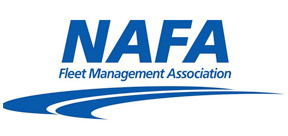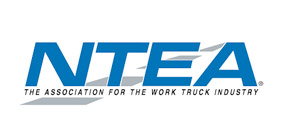In-house EMS improves emergency care in Portage, Wis.

In February, Portage, Wis., residents voted overwhelmingly in favor of implementing a fire department-based EMS service. They even had a leader who could put the idea in motion: Fire Chief, Troy Haase, who had been awarded First Responder of the Year just a few months previous and embodied more than 30 years of fire service experience. He began his firefighting and EMT career in 1990.
Haase started his firefighting in Portage as a firefighter/EMT. After that, he was hired in Two Rivers and attained his paramedic license while working there. In 1998 he went to Fond du Lac Fire Rescue and spent 22 years in multiple positions, ending as a division chief of fire prevention.
“I have to give credit for the knowledge I have to manage a department and start the EMS program,” Haase said. “I retired in April of 2020 and moved back home. The chief job opened, I applied and was hired in November of 2020. It has been a learning process, and everyone in the department has helped me.”
He added, “The fire department-based EMS service wouldn’t be possible without everyone in the fire department and city hall supporting it.”
In Portage’s situation, the city previously had a private ambulance operated by a hospital system. “We had a new hospital buy out our local hospital, and they increased our costs per year from no fees to $700,000. There was no funding in our current budget, so we had to pay from our general fund. We had to cut services to afford these fees.” That, of course, did not go over well with local residents.
“Those increased fees from our new hospital system first made me think of starting the program. As I researched the situation, I realized that our service area and population required two to three ambulances. Our current service was not providing that needed response. In EMS time saves lives.”
Haase asked the council to allow him to research the costs of starting Portage’s own service. That way, they could control the quality and the cost.
“The most important thing is to research the level of service and response times. You need to show that you can provide a better service for the cost. I don’t believe you can provide it cheaper than a hospital, but you cross-train your members so they can respond to fires and EMS calls. This helps you get your effective response force to fire scenes faster, which saves lives and property.”
Recounting the steps forward, he said: “We started the process in November of 2023 when we ordered three ambulances to be delivered in December of that year. We went to a referendum in February and won by 70% of the vote. The process was approved by the council and supported by Mayor Mitchel Craig and City Administrator Michael Bablick.”
Haase said he thinks the process was managed well, and a marketing company was part of that. “The process of educating the community was lengthy and time-consuming but was well worth it.”
The education of local political leaders played a key role, Haase stated. They provide support for such an endeavor.

“I brought each one of them in, explained our ideas, and asked them for their support, and they granted it. I spent many hours meeting with and presenting to the township boards and citizens, showing them the service we could offer and the reduced response times.”
Portage’s ambulance and fire department covers the city and four townships, a total of 170 square miles.
“In the grand scheme, it also helps the other surrounding communities, because we can provide mutual aid to them when they need help,” Haase explained. “Portage is the only full-time fire and EMS service in the county. We have a great working relationship with our county and very good mutual aid cooperation.”
What was the public’s response to the idea of combined service?
“The public was upset with the previous service and the sudden increase in cost from the hospital. Our service was cut from two to three ambulances in service to one or two per day. They were also using one ambulance for transfers, which left only one in service. This caused delayed response from other communities, and our citizens were left waiting up to 20 minutes for another ambulance service to respond. Of course, they didn’t want to increase taxes, but our education efforts helped them understand that better service was the most important. We spent a lot of time educating the community and used the services of Mueller Communications to help us market the program.”
Portage will know very soon whether the move has saved money and shortened turnaround times when emergency calls are made.
“We go live Jan. 1, so we will know better as we start taking calls. Our referendum was about $1.5 million, twice as much as we were paying. But with this, we will be providing three ambulances to our communities. The move will also bolster our paid on-call fire response because new members are cross-trained in fire and EMS.”
There was a one-time startup cost of about $1.6 million, which purchased those three ambulances and equipment. It also covered a building remodel and upgrade.
“This benefits our communities with quicker response times, and three guaranteed ambulances ready to respond 24/7,” Haase said. “It bolsters our fire response with quicker response times and additional workforce. It allows us to control costs and provide the best service possible.”
The department had to hire more staff to implement everything as planned.
“We currently have seven full-time staff and 18 paid on-call. We will be hiring 14 new full-time personnel, giving us 21 total full-time employees and an administrative assistant. We will staff six per day.”
The program has taken almost two years to get up and running.
“We were halted a little bit because we weren’t allowed to have a referendum last November. We had to wait until February. Also, it was important to hire a marketing firm to help with education. The local firefighter’s union, the Professional Firefighters of Wisconsin, and the International Association of Firefighters were also very helpful when it came to educating the community,” Haase noted.
Training and cross-training then had to take place, so the city hired 11 paramedics, two EMTs, and one advanced EMT.
Three of the paramedics had to take fire classes and completed the entry-level class in October. The two EMTs will start the Paramedic class in January. “That’s about 1,000 hours, and they should finish in December of 2025. We will eventually have to send the AEMT to paramedic class as well.”
Portage received a Wisconsin Fast Forward Grant to send 10 of its personnel to EMT class. Eight paid on-call firefighters completed the course, and one of the paid on-call members who completed the course was hired full-time. The others will be able to respond to EMS calls, in addition to fire calls, which will allow them to make more money.
The four townships signed a contract, and they will pay $255,000. The remainder of the costs will be covered by the residents who use the service, with insurance reimbursement. Since we started an EMS program and passed a referendum for EMS, going forward, it will have a separate budget per state law.
Haase said that buying three ambulances at once was difficult because many ambulance manufacturers have a two- to three-year wait time.
“The project would have been very difficult if it wasn’t for Cyrea Lynch of North Central Emergency Vehicles. With ambulances being hard to get, she provided us with three demo Osage Ambulances. Osage was accommodating and made the three ambulances the way we wanted.” When the holidays are over, Portage residents are going to get a good look at their new setup and those ambulances, and likely feel relieved to know that they can count on improved emergency care.
Next Article: Holiday light recycling keeps tanglers out of the landfill

